- 1The Red Wedding87%

The Red Wedding in Game of Thrones is one of the most devastating and iconic moments in television history, and for fans, it remains a turning point in the series. Taking place in season 3, episode 9, the Red Wedding is a brutal massacre that shatters the Stark family and changes the course of the war for the North.
The scene unfolds during the wedding of Edmure Tully and Roslin Frey, which is meant to be a joyous occasion, but it turns into a treacherous bloodbath. Robb Stark, his mother Catelyn Stark, and their bannermen are invited to the event under the pretense of an alliance with House Frey, following the breaking of Robb’s marriage pact with House Frey. However, the Freys, led by Walder Frey, and their allies - the Boltons - betray the Starks, orchestrating a violent ambush.
In a shocking and heart-wrenching moment, Robb, Catelyn, and many of their bannermen are murdered in cold blood, with Robb’s pregnant wife, Talisa, also stabbed repeatedly. The brutality of the massacre is amplified by the cruelty of the Freys, who allow the Starks to believe the wedding is going smoothly before revealing their treachery. The massacre ends with Catelyn’s desperate plea for her son’s life, but she, too, is killed. The event is the beginning of the fall of House Stark, leading to the disbandment of their army and leaving them vulnerable to further attacks.
For fans, the Red Wedding is an emotional gut punch, as Robb Stark, who had been positioned as the central figure in the Stark family’s fight for justice, is ruthlessly cut down just when victory seemed possible. Catelyn’s death is also tragic, as her transformation into Lady Stoneheart in the books represents her becoming consumed by vengeance. The Red Wedding is the embodiment of the series’ theme that no one - not even the main heroes - is safe in Westeros. - 2The Death of Ned Stark84%
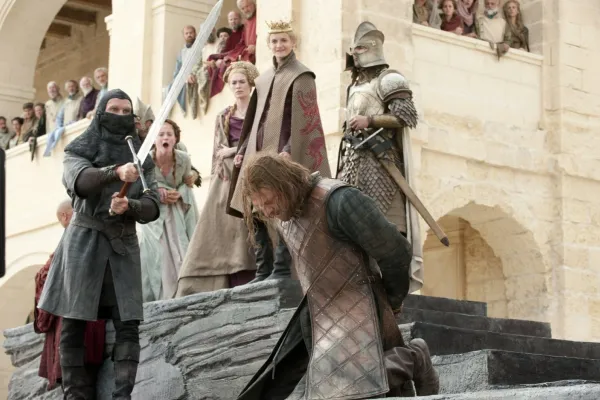
The death of Ned Stark in Game of Thrones completely defied the expectations of fans who expected him to be the central hero. This event takes place in season 1, episode 9, and it marks a major turning point in the story. After uncovering the truth about King Robert Baratheon’s death and the illegitimacy of Joffrey Baratheon’s claim to the throne, Ned is betrayed by his supposed allies. He attempts to do the honorable thing by exposing the truth and placing Stannis Baratheon as the rightful heir, but his noble intentions come at a cost.
In a shocking twist, Petyr Baelish (Littlefinger) betrays Ned, and Cersei Lannister, in a calculated move, orders Ned’s execution. Joffrey commands that Ned be executed, and in a brutal public scene, Ned is beheaded in King's Landing, marking the end of his arc. His death is not only tragic for his family but serves as a moment of moral reckoning - it’s a reminder that in Westeros, honor often comes with a high price, and it’s a harsh world where power is won through ruthlessness, not virtue.
For fans, Ned's death was heartbreaking and unexpected, as he had been portrayed as a noble and honorable figure who stood in stark contrast to the scheming, manipulative characters around him. His death was the first of many shock deaths in the series, and it set the tone for the unpredictable and brutal nature of the show. It also served as the catalyst for the Stark family’s journey through the rest of the series, with each of his children - Robb, Sansa, Arya, Bran, and Jon - carrying the weight of his death and legacy in their own ways. - 3The Purple Wedding (The Death of Joffrey)74%

The Purple Wedding, which marks the death of Joffrey Baratheon, is one of the most satisfying and highly anticipated moments in Game of Thrones, especially for fans who had grown to loathe the sadistic, tyrannical king. The wedding takes place in season 4, episode 2, when Joffrey marries Margaery Tyrell in a lavish ceremony. Throughout the event, Joffrey revels in humiliating his guests, particularly his uncle Tyrion Lannister, whom he relentlessly taunts. As the wedding feast continues, Joffrey begins to choke and convulse violently after drinking wine, eventually dying in front of the entire court in a highly public and dramatic fashion.
The true satisfaction for fans comes from the fact that Joffrey’s death is a long-awaited moment of justice. His cruel and tyrannical rule had caused immense suffering for characters like Sansa Stark and Tyrion, and seeing him meet a gruesome end felt like poetic revenge for his many wicked deeds. Olenna Tyrell plays a critical role in his death - working with Sansa Stark and orchestrating the poison that kills Joffrey. The poison, "The Strangler", causes Joffrey to experience excruciating pain and suffocation, and his final moments, including his attempt to accuse Tyrion before dying, are marked by guilt and cruelty, making it even more satisfying for viewers who had followed his reign of terror.
The visual of Joffrey’s corpse turning purple (hence the name "Purple Wedding") became iconic, symbolizing the end of his reign and the power struggle that follows. What makes this moment so powerful is that while the immediate reaction is one of triumph, the series quickly turns the event into a political nightmare, as Tyrion is framed for the murder and forced to go on trial. - 4Daenerys' dragons hatch70%

The moment Daenerys' dragons hatch in Game of Thrones is one of the most iconic and magical scenes in the series, marking the beginning of Daenerys' rise to power and solidifying her destiny as the Mother of Dragons. This event takes place in season 1, episode 10, during the series' finale. After the death of her husband, Khal Drogo, and the devastating loss of everything she had known, Daenerys is left alone with the three petrified dragon eggs given to her as a wedding gift. In the wake of her grief, she steps into the funeral pyre to burn her husband’s body, but instead of perishing in the flames, Daenerys emerges unscathed - with the three baby dragons hatching from the eggs.
The scene is a moment of pure magic, as the dragons - Drogon, Rhaegal, and Viserion - are the first of their kind to be born in centuries, marking the return of dragons to the world of Westeros. The fire and magic surrounding Daenerys' transformation into the Mother of Dragons symbolize her strength, resilience, and connection to the Targaryen heritage. For fans, this moment is a thrilling culmination of Daenerys’ journey, as it marks the moment she goes from an exiled princess to a powerful figure with dragons, giving her the potential to conquer kingdoms and fulfill her destiny.
The symbolism of fire and blood - the Targaryen motto - comes to life in this scene. It is a pivotal point in the series, as the dragons will become the core of Daenerys' army and identity throughout the show. - 5The Mountain Vs. the Viper66%

The Mountain vs. the Viper (aka Gregor Clegane vs. Oberyn Martell) is one of the most unforgettable and heart-stopping moments in Game of Thrones, and fans were left both exhilarated and devastated by its shocking outcome. The battle takes place in season 4, episode 8, during the trial by combat to determine the fate of Tyrion Lannister, who is accused of poisoning King Joffrey. Oberyn Martell, known as the Red Viper, volunteers to fight for Tyrion, seeking vengeance for the brutal murder of his sister, Elia Martell, and her children by Gregor Clegane, the Mountain.
Oberyn enters the fight with a sense of confidence and agility, using his speed and precision to outmaneuver the massive, slow-moving Mountain. Throughout the fight, Oberyn's quickness and taunting of Gregor create a sense of inevitable triumph. Fans were on the edge of their seats as Oberyn dominated the fight, landing several blows and causing Gregor Clegane to stumble and fall. As Oberyn demands a confession from Gregor regarding the deaths of his sister and her children, he gets too close to his towering foe, who manages to grab him, crush his skull, and deliver one of the most gruesome and shocking deaths in the series.
The shocking and graphic nature of the skull-crushing death is a turning point for the series, and fans felt a deep sense of betrayal and loss as Oberyn's tragic end not only leaves Tyrion without a champion but also marks the end of a beloved character’s arc. What makes this fight so memorable is the emotional depth behind the combat, as Oberyn’s personal vengeance intertwines with the physical brutality of the fight itself. - 6The Murder and subsequent resurrection of Jon Snow61%
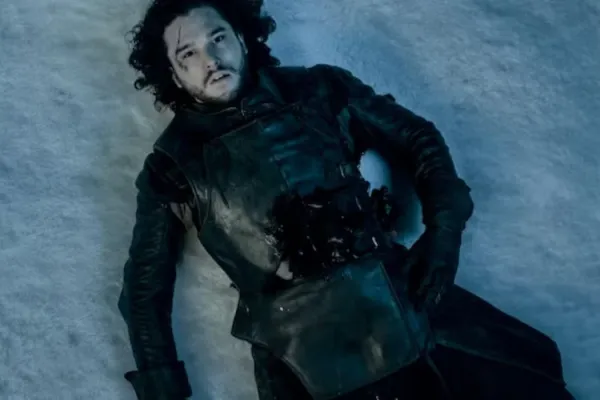
The murder and resurrection of Jon Snow in Game of Thrones is one of the most shocking and emotionally charged moments in the entire series. Jon Snow, the honorable Lord Commander of the Night's Watch, is stabbed to death by his own men at the end of season 5, episode 10. After a series of events where Jon’s leadership decisions clash with the Night's Watch members, particularly their disdain for his growing alliance with the wildlings, a group of his own brothers - including Alliser Thorne, Othell Yarwyck, and Bowen Marsh - betray him. They lure Jon into a false sense of security and then stab him repeatedly, with Thorne’s final betrayal being the most devastating as he says, “For the Watch.”
For fans, this moment is a gut-wrenching and seemingly final farewell to one of the series’ most important and noble characters. The sheer shock of Jon's death left viewers reeling, and many believed it would be the end of Jon Snow’s arc. Fans who had followed his journey - his rise from a bastard in Winterfell to a leader who united men from all walks of life - were devastated, and questions about who could possibly avenge him or restore peace to the realm were left hanging. However, in season 6, episode 2, Jon Snow is resurrected in one of the most dramatic and mysterious moments in the series. Melisandre, the Red Priestess, uses her powers and the magic of the Lord of Light to bring him back to life. The moment is a combination of mystical, religious symbolism and raw emotion, as Jon awakens to find himself back in the world of the living.
The resurrection scene is intensely powerful, as Jon Snow’s revival brings a sense of hope, not only for the character himself but for the North and the larger struggle against the White Walkers. Fans were both thrilled and perplexed by Jon's return - what would this mean for his character, and would it change the course of the events to come? His second life allows Jon to embrace his true identity and ultimately drives his leadership in the fight against the Night King and his destiny. - 7The Battle of the Bastards60%
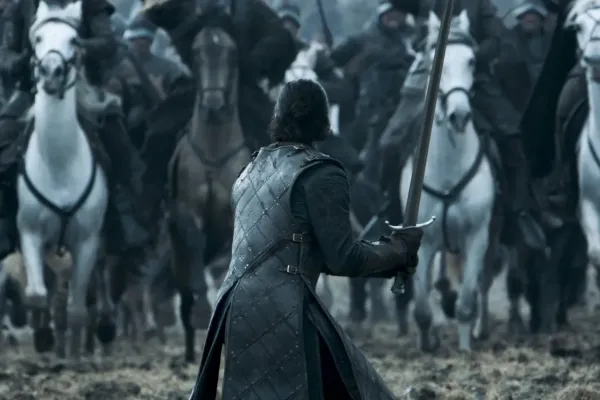
The Battle of the Bastards is one of the most epic and exhilarating moments in Game of Thrones, and it’s a defining battle for Jon Snow and his journey to reclaim Winterfell from Ramsay Bolton. Taking place in season 6, episode 9, the battle sees Jon Snow, along with Sansa Stark, Ramsay Bolton, and their respective armies clash for control of the North. Jon leads the Stark forces, which are vastly outnumbered, while Ramsay commands the Bolton army, supported by his ruthless tactics and the terror he inspires. What makes this battle so intense is the sheer brutality, as Jon and his forces face overwhelming odds, with the Boltons using psychological warfare, including the use of hostages and cavalry traps, to break the morale of Jon’s troops.
The battle itself is chaotic and desperate, with Jon at the center of the action, trying to navigate the dangers of battle while holding onto the hope of victory. One of the most heart-stopping moments occurs when Jon, in a desperate bid, charges headfirst toward the enemy, only to be trapped in a sea of bodies as the Bolton forces close in. It’s only through the timely arrival of the Knights of the Vale, led by Sansa Stark, that the tide of battle is turned. Petyr Baelish’s unexpected support gives Jon the chance to rout Ramsay’s forces and take Winterfell.
For fans, the battle is both a moment of triumph and relief, as Jon, with Sansa's strategic cunning, successfully reclaims Winterfell from the sadistic Ramsay, who is then captured. The subsequent scene where Ramsay is locked in a cage and torn apart by his own starving hounds is deeply satisfying, as it represents poetic justice for the man responsible for so much pain and suffering. - 8Cersei blows up the Sept of Baelor57%
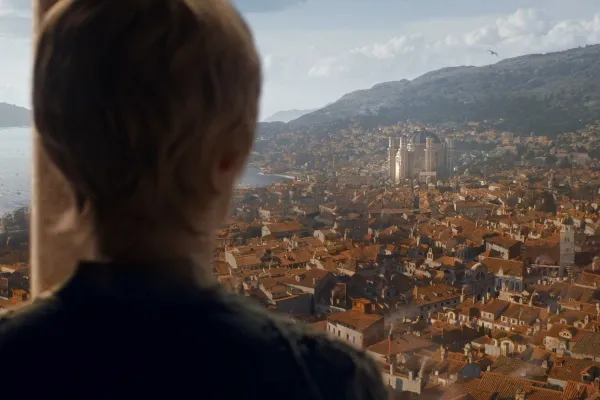
Cersei Lannister’s decision to blow up the Great Sept of Baelor in Game of Thrones is one of the most calculated and ruthless moves she makes throughout the series, and it marks a pivotal moment in her quest for power. Cersei is faced with the Faith Militant’s control over King’s Landing and the threat of being held accountable for her many crimes. The High Sparrow and the Faith have manipulated the situation to the point where Cersei feels she has no choice but to strike back with devastating force.
In season 6, episode 10, Cersei orchestrates one of the most iconic and shocking acts of destruction in the series. Using wildfire, a magical and deadly substance that was secretly stockpiled beneath the Sept of Baelor, she arranges the explosive destruction of the Great Sept, killing hundreds of her enemies, including the High Sparrow, Margaery Tyrell, Loras Tyrell, and other powerful figures who had conspired against her. The green wildfire explosion consumes the Sept in a fiery blaze, symbolizing both Cersei’s complete disregard for anyone standing in her way and her willingness to sacrifice everything to gain control.
From a fan’s perspective, this moment was both shocking and satisfying. Cersei had spent much of the series playing a dangerous game of politics and maneuvering to get what she wanted, and finally, this act of vengeance was the culmination of all her calculated plans. It was a moment where Cersei took control of her destiny, casting aside any pretense of following rules or laws and becoming the ultimate ruthless ruler. Her cold, unrepentant nature was on full display when she calmly watched the explosion unfold from the Red Keep, aware of the devastation she had wrought. - 9Battle of Blackwater53%

The Battle of Blackwater is a decisive moment for King’s Landing, as Stannis Baratheon lays siege to the city in an attempt to claim the Iron Throne from Joffrey Baratheon. With Tyrion Lannister acting as the city’s last line of defense, the episode is full of tension and high stakes. The Lannisters are vastly outnumbered, and the people of King's Landing are at the mercy of Stannis' forces. The unexpected wildfire explosion, masterminded by Tyrion and set off at the perfect moment, wipes out a huge portion of Stannis’ fleet in a blaze of green fire, turning the tide of the battle. Fans can never forget the sight of Tyrion Lannister's strategic brilliance in action, earning him a moment of victory despite being undermined by his family. Behind the scenes, the wildfire was actually created using special effects and practical pyrotechnics, with the production team using green-colored flames to symbolize its magical properties. This battle also marks the rise of Tyrion as a key player in the political struggle for power, as he defends the capital and solidifies his legacy in Westeros. It’s a chaotic, unforgettable clash that showcases the brutality of war and the unexpected triumph of strategy over brute force.
- 10Ayra takes her vengence on Walder Frey52%

From a fan’s perspective, Arya Stark’s vengeance on Walder Frey in Game of Thrones is one of the most satisfying and poetic moments in the series. After the horrific Red Wedding, where Robb Stark, Catelyn Stark, and many of their bannermen were slaughtered by the Freys, Arya spends years honing her skills in secret, training with the Faceless Men and becoming a deadly assassin. Her return to Harrenhal in season 6, disguised as a serving girl, sets the stage for the ultimate revenge. She secretly poisons the Frey sons and serves them to their father in a pie, and then reveals herself to Walder, calmly explaining her vengeance. The sheer satisfaction of watching Arya deliver the words “Tell Cersei I want her to know it was me” just before cutting his throat is a moment of justice for the Stark family, a crowning achievement for Arya’s transformation.
- 11Cersei’s Walk of Atonement44%
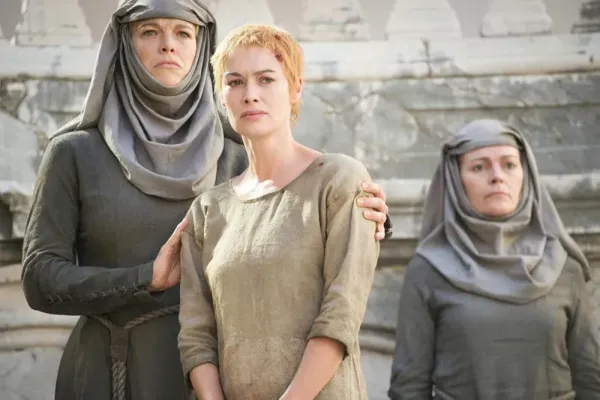
Cersei Lannister's Walk of Atonement is one of the most gut-wrenching and humiliating moments in Game of Thrones. After being imprisoned by the High Sparrow and the Faith Militant for her various sins, including adultery and incest, Cersei is forced to publicly atone for her actions as part of her release. Stripped of her dignity, Cersei is ordered to walk naked through the streets, allowing the people of the city to throw insults and stones at her as she makes the walk from the Red Keep to the Great Sept of Baelor. The scene is deeply symbolic, as it marks Cersei's fall from the heights of power to utter humiliation, something the proud Queen of the Seven Kingdoms could never have imagined.
What makes the scene even more intense is the incredible emotion behind it - Cersei's hatred, her ruthlessness, and her arrogance are stripped away, and we see her as a broken, vulnerable woman. For fans, it was both tragic and poetic, a moment that saw her publicly exposed and powerless after she had spent so long controlling others. What many fans don’t know is that Lena Headey (Cersei) was actually made to walk through the streets of Dubrovnik, Croatia, completely naked for the filming. While the shoot was surrounded by a lot of security, it was still a challenging and vulnerable experience for the actress, adding another layer of realism to the scene. - 12Burning of King’s Landing ("The Bells")36%
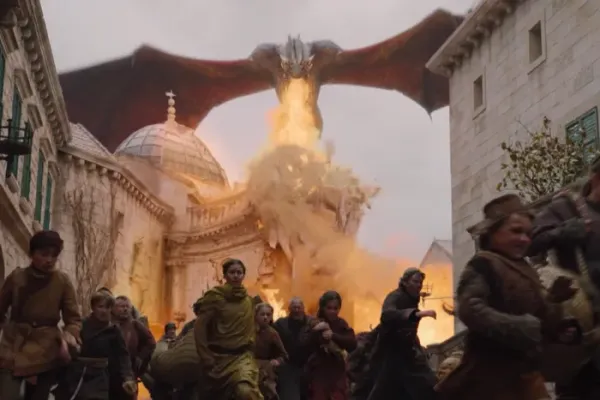
The burning of King’s Landing in Game of Thrones is one of the most devastating and controversial moments in the entire series, and it dramatically reshapes the fates of key characters and the future of Westeros. This occurs in season 8, episode 5, when Daenerys Targaryen, after losing several of her closest allies and the death of Missandei, becomes consumed by rage and grief. Despite the city’s surrender, Daenerys, determined to seize the throne and destroy her enemies, commands Drogon to unleash devastating wildfire upon King’s Landing, decimating both the Red Keep and the city's innocent citizens. The result is a fiery massacre, as tens of thousands of people are burned alive, including civilians who were simply caught in the chaos of the war.
For fans, the burning of King’s Landing is both shocking and tragic. It marks Daenerys' complete break from the ideal of a liberator to the role of a tyrant, essentially mirroring the destruction caused by her father, the Mad King, whom she had vowed to avenge. It is a moment of irreversible loss, as Daenerys, in her pursuit of the throne, loses her moral compass, leading to a split with Jon Snow, her lover and rightful heir. The destruction of the city is a powerful visual metaphor for the cost of unchecked power and vengeance, leaving the Iron Throne in ruins, much like the legacy of the Targaryens themselves. Fans were left both awed and devastated by the magnitude of Daenerys' actions, questioning whether the tragic fall of her character was justified by the buildup of her grief, losses, and power struggles. What’s especially controversial is how Daenerys' descent into madness happens quickly and violently, leaving many fans debating whether her turn as a destructive ruler was earned throughout the series. - 13The Execution of Littlefinger32%

The execution of Petyr Baelish (Littlefinger) in Game of Thrones is one of the most satisfying moments, marking the end of one of the series' most manipulative and deceitful characters. Littlefinger, who had spent years playing a dangerous game of thrones, weaving webs of lies, betrayal, and political intrigue, is finally undone by his own hubris. His end comes in season 7, episode 7, when Sansa Stark and Arya Stark - who have both grown into shrewd, formidable players in their own right - decide to take him down.
Throughout the series, Littlefinger had played a major role in causing chaos by manipulating people like Ned Stark, Catelyn Stark, and Robb Stark, leading to their deaths. He had also tried to undermine the Stark family in order to secure his own power, especially by sowing distrust between Sansa and Arya. However, Sansa and Arya’s shared realization about his role in the chaos leads to his undoing. In a brilliant twist, Sansa, who has grown into a powerful and clever leader, sets up Littlefinger by having him convicted of treason in front of the North’s leaders. As he tries to plead for his life, it’s too late - Arya Stark swiftly executes him with a single, sharp cut to his throat, bringing his reign of manipulation and deception to a brutal end. - 14Jon Snow Kills Daenerys Targaryen30%
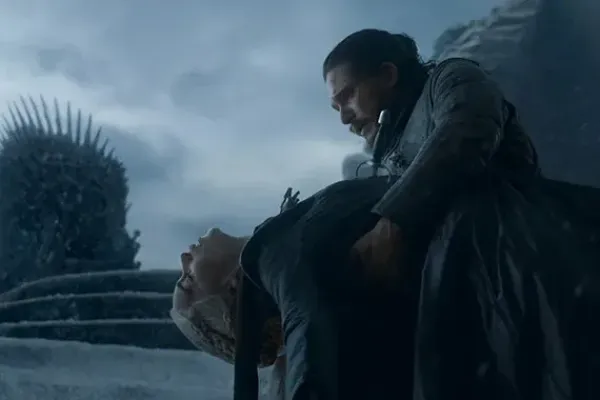
Jon Snow killing Daenerys Targaryen in Game of Thrones is one of the most heart-wrenching and controversial moments in the series. After Daenerys destroys King’s Landing, burning the city and its innocent inhabitants with Drogon, Jon Snow is forced to confront the dark side of the woman he loved and fought for. Though Jon has always been a man of honor and principle, he begins to see the dangers of Daenerys’ thirst for absolute power, especially after her recent descent into tyranny.
Jon, who had initially seen Daenerys as the "Breaker of Chains" and the one to liberate the oppressed, now faces the tragic reality that she has become a dictator like those she sought to overthrow. Despite their deep connection and Jon’s love for her, Jon realizes that Daenerys’ increasingly unstable rule threatens the future of Westeros. In a heart-wrenching final confrontation, Jon, tormented by his duty to protect the realm, kills Daenerys by stabbing her in the heart while she embraces the Iron Throne, unaware of his intentions.
The scene is a tragic moment of betrayal and sacrifice for Jon, who is forced to choose between his personal feelings and his sense of duty to the people of Westeros. Fans were left shocked and divided, as Daenerys had long been a hero of sorts, fighting to reclaim her throne. However, her descent into destructive madness mirrored the very tyrants she had sought to destroy. Jon’s decision ultimately reflects the moral complexities of the series, showing that love and loyalty can be at odds with the greater good. - 15Jon Snow discovers he's really Aegon Targaryen23%
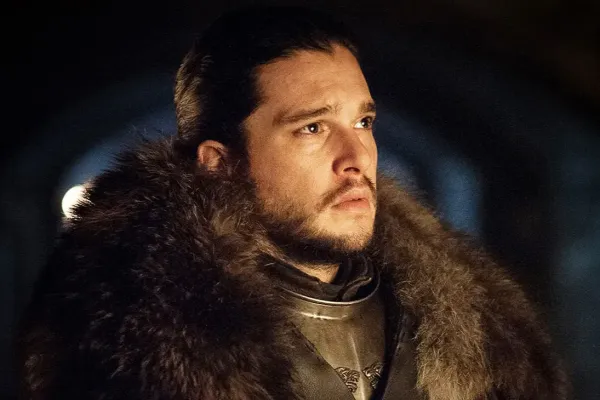
Jon Snow’s discovery that he is actually Aegon Targaryen, the rightful heir to the Iron Throne, is one of the most mind-blowing and game-changing moments in Game of Thrones, and it radically alters the course of the story. This revelation, which comes in season 8, episode 1, is a turning point not only for Jon’s character but for the entire power structure of Westeros. Throughout much of the series, Jon believes he is the bastard son of Ned Stark, raised in Winterfell without knowledge of his true parentage. However, thanks to the research of Bran Stark and Samwell Tarly, Jon learns that he is the son of Lyanna Stark (Ned’s sister) and Rhaegar Targaryen, the crown prince of House Targaryen, making him the legitimate heir to the throne, with the full name of Aegon Targaryen.
Jon’s identity as a Stark has always been central to his character, and the idea that he is actually a Targaryen - a direct descendant of the Mad King’s line - adds an entire layer of political and emotional complexity. It’s a powerful moment, especially since Jon has always felt like an outsider, even within his own family. As Aegon Targaryen, Jon now holds a claim to the Iron Throne that could rival Daenerys’ own, creating a major tension in their relationship. This fact creates a rift, as Daenerys’ ambition for the throne starts to collide with Jon’s newfound rightful claim.
What makes this moment even more intriguing is the way it plays into the themes of identity and destiny. Jon’s entire life has been shaped by the belief that he is a bastard, and his character arc has largely been about proving that his worth is not tied to his bloodline. The truth about his parentage puts Jon at the center of the Targaryen-Stark rivalry, raising questions about loyalty, love, and power. Fans were left wondering how Jon would reconcile his love for Daenerys, his loyalty to his Stark roots, and his new claim to the throne. - 16Cleganebowl22%
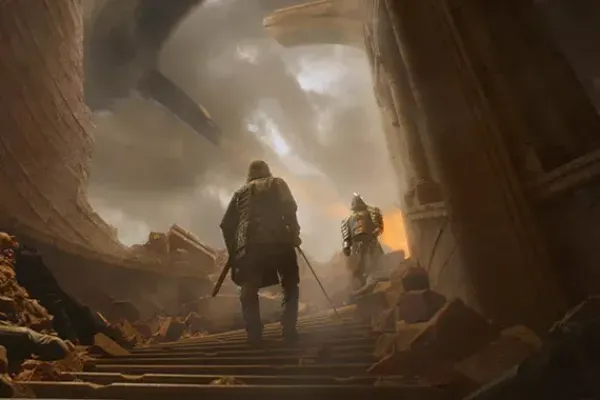
Cleganebowl is arguably one of the most highly anticipated and satisfying showdowns in Game of Thrones, especially for fans who had been waiting for years to see the rivalry between Sandor Clegane (The Hound) and his brother Gregor Clegane (The Mountain) come to a brutal conclusion. The Battle of Cleganebowl takes place in the chaotic finale of season 8, where The Hound, motivated by his thirst for revenge and a desire to end his brother's reign of terror, confronts The Mountain in King's Landing. The fight is an explosive clash of physical strength and unrelenting hatred, with The Mountain, now a hulking, undead monster, displaying terrifying power, while The Hound, wounded and determined, fights with the fury of a man seeking closure. Fans were ecstatic to finally witness this long-awaited battle, knowing the deep, traumatic history between the two brothers - Gregor’s sadistic violence toward Sandor during their childhood, leaving him scarred both physically and emotionally. The most memorable and satisfying part for fans is The Hound’s final act of defiance, when, in a moment of pure reckoning, he decides to take down his brother by dragging both of them into the flames of the destroyed Red Keep, symbolizing the end of their dark familial legacy.
- 17Viserion Becomes an Ice Dragon22%
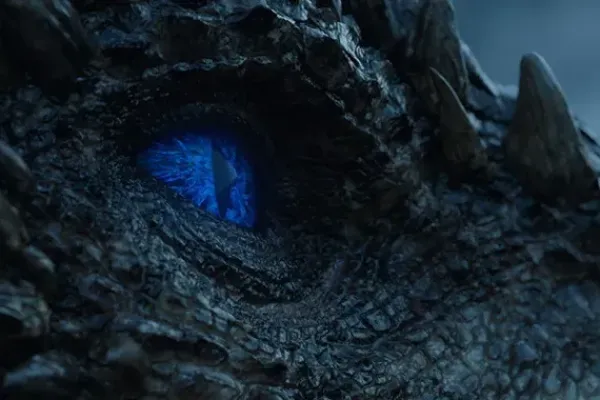
The moment Viserion becomes an ice dragon in Game of Thrones is one of the most shocking and pivotal twists in the entire series. It happens in season 7, episode 7, during the Battle Beyond the Wall, where Jon Snow, Daenerys Targaryen, and their group of fighters face off against the Army of the Dead. After a fierce struggle, the group is trapped on an ice island, and the situation becomes dire. In a stunning turn of events, the Night King, the leader of the White Walkers, uses a giant spear to strike Viserion. Viserion is critically injured and falls into the frozen lake, seemingly dead. However, the Night King uses his powers to raise Viserion as one of his own undead creatures, transforming him into an ice dragon.
The sight of Viserion rising from the lake with glowing blue eyes and breathing ice is one of the most terrifying moments in the show, and fans were left stunned by the implications. Daenerys, who had always cherished her dragons as symbols of her Targaryen power, loses one of her most powerful allies to the Night King, giving him a devastating weapon to use in the war for the living. Viserion's transformation marks a significant shift in the power dynamic, as it means that the White Walkers now possess their own dragon, which can breathe ice instead of fire, adding a terrifying element to their army and making the upcoming battle for Westeros even more desperate.
This moment is significant not only because of the visual spectacle but also because it showcases the terrifying power of the Night King and how much of a threat he poses. It’s a key moment in the lead-up to the ultimate showdown between the living and the dead. - 18Arya Stark Kills the Night King22%
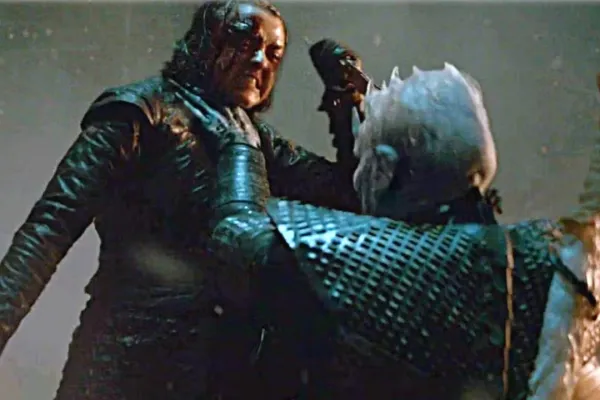
The moment when Arya Stark kills the Night King in Game of Thrones is one of the most surprising and exhilarating scenes in the entire series. Taking place in season 8, episode 3, during the Battle of Winterfell, this event is the culmination of Arya's arc and her transformation into one of the deadliest characters in Westeros. The battle against the Army of the Dead and the White Walkers is at its peak, with the living fighting desperately to hold the walls of Winterfell. The stakes couldn’t be higher, as the Night King, the leader of the White Walkers, brings his undead army to the gates of the Stark stronghold.
Throughout the battle, Arya’s journey comes full circle as she uses her stealth, training with the Faceless Men, and sheer bravery to infiltrate the heart of the conflict. As the Night King approaches Bran Stark - who is acting as bait to lure him into a trap - Arya, using her agility and speed, emerges from the shadows. In a thrilling moment of tension, Arya leaps toward the Night King, who attempts to kill her, but she cleverly switches the dagger from one hand to the other and drives it into his heart. The moment she does, the Night King shatters, and with him, his entire army of White Walkers, Wights, and Viserion are destroyed, bringing an end to the long night.
For fans, Arya’s unexpected kill is both shocking and satisfying, especially after so much focus on Jon Snow’s potential destiny as the hero who would defeat the Night King. Arya, who had spent the series honing her deadly skills and overcoming great personal challenges, becomes the unexpected savior of Westeros. It’s a moment of triumph for Arya and a turning point in the war against the dead. The fact that she alone brings down the Night King gives her arc a powerful conclusion, proving that she is not just a survivor but one of the most capable fighters in the entire series.
Add Your Vote